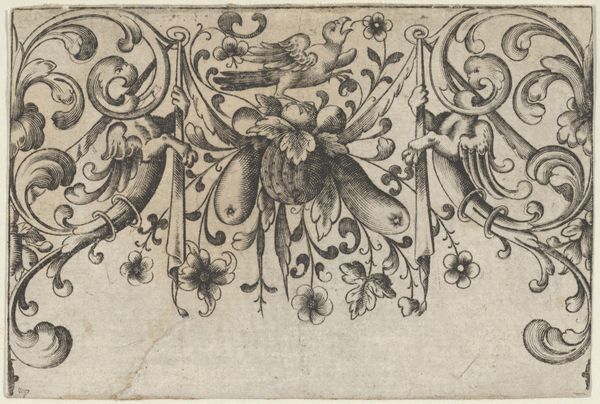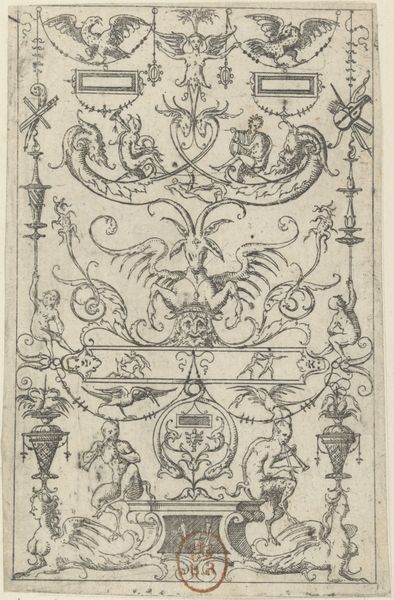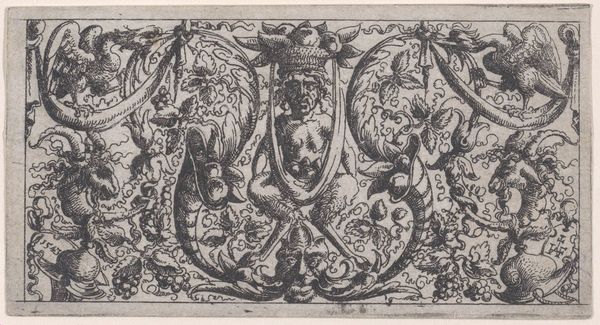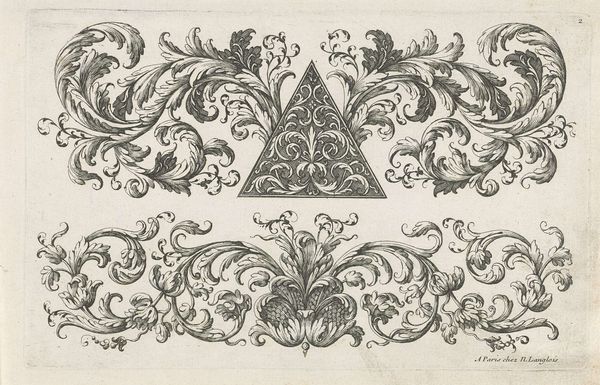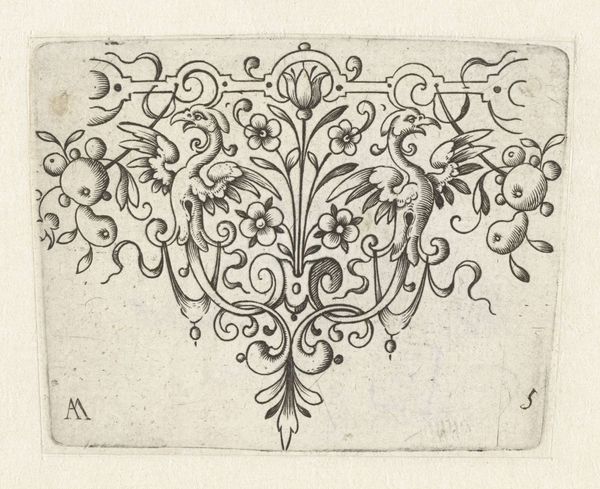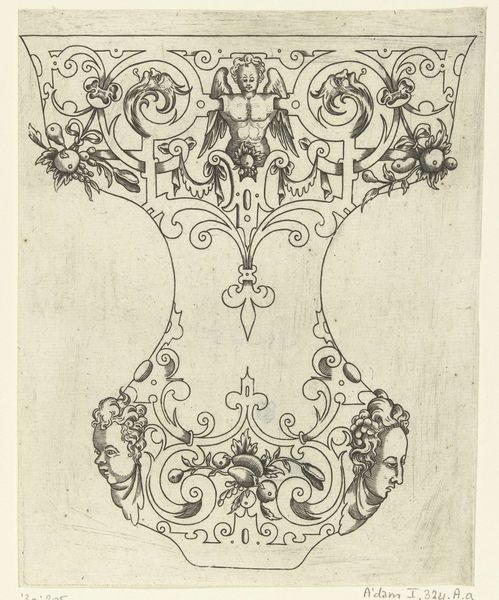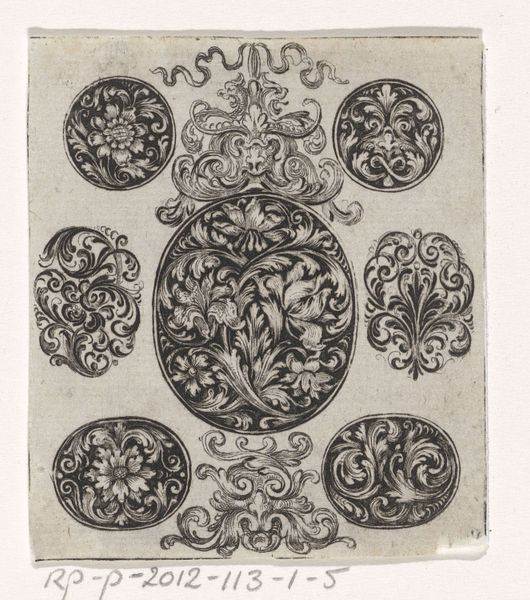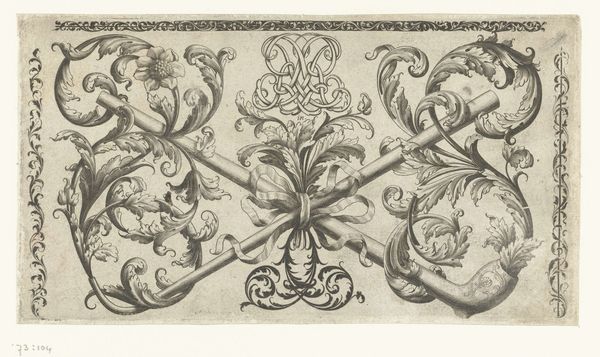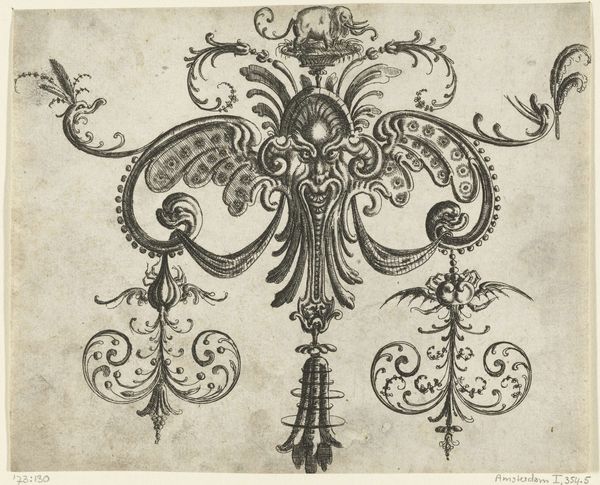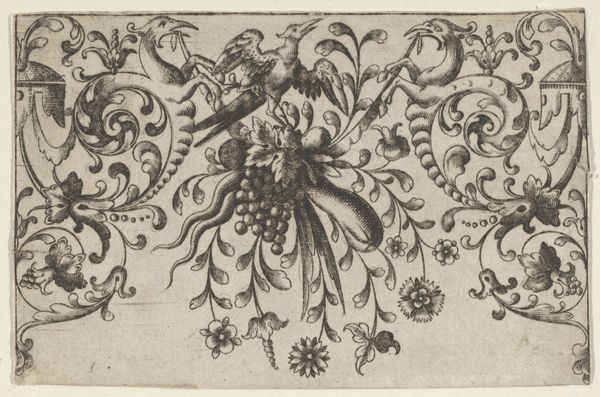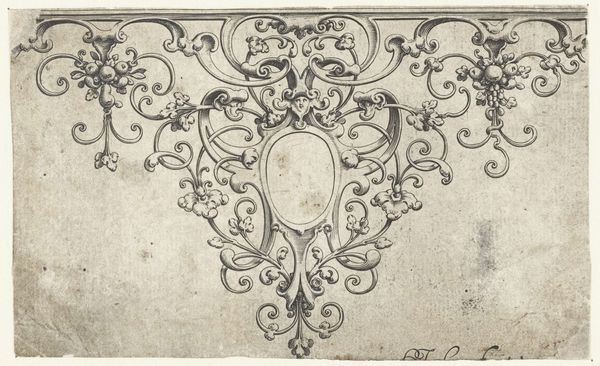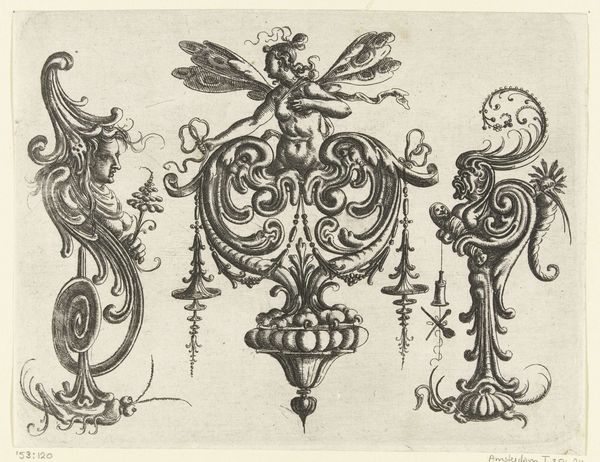
ornament, print, engraving
#
ornament
#
pen drawing
# print
#
old engraving style
#
ink line art
#
11_renaissance
#
geometric
#
line
#
pen work
#
decorative-art
#
engraving
Dimensions: height 38 mm, width 44 mm
Copyright: Rijks Museum: Open Domain
Curator: Here we have an engraving from the period between 1500 and 1600, simply titled "Ornament waarop linksboven en rechtsboven een insect zit," or "Ornament with an insect at the top left and top right," and is attributed to an anonymous artist. Editor: My immediate reaction is that this is dense, almost claustrophobic. There's very little negative space. It makes me think about labor-intensive processes. All those lines carefully etched. Curator: Exactly! Considering the socio-political landscape of the Renaissance, these ornaments were integral to courtly life. Prints allowed for wider dissemination of designs that reinforced a culture of elite aesthetics and power. Editor: So this wasn't just art for art's sake. Someone, or a collective of craftspeople, were making a reproducible pattern, an object, in turn shaping and signifying their own place and agency. Curator: Precisely. The presence of the insects disrupts the rigidity of the geometry. Was it perhaps an intentional injection of organic wildness against the manufactured order imposed by court life? Editor: I see it somewhat differently. For me the materiality –the inked lines, the precise execution– creates a sense of preciousness. I feel the controlled effort behind it, revealing production costs and craft processes inherent to printing. Curator: Intriguing. You make me think about the paper substrate and how this design, easily transferable, potentially devalued artisanal work, yet expanded design to all classes of society. Editor: This piece epitomizes how deeply entangled creation and consumption are with power relations. Understanding the materials gives perspective on broader contexts, especially how art, in the process of becoming accessible, can serve the established structures too. Curator: True, it is a fascinating glimpse into the evolving dynamic between artists, craftspeople, and patrons during the Renaissance and its effect on socio-economic mobility. Editor: Thinking about production reminds us that ornamentation has always demanded material considerations, social input and ideological intention.
Comments
No comments
Be the first to comment and join the conversation on the ultimate creative platform.
